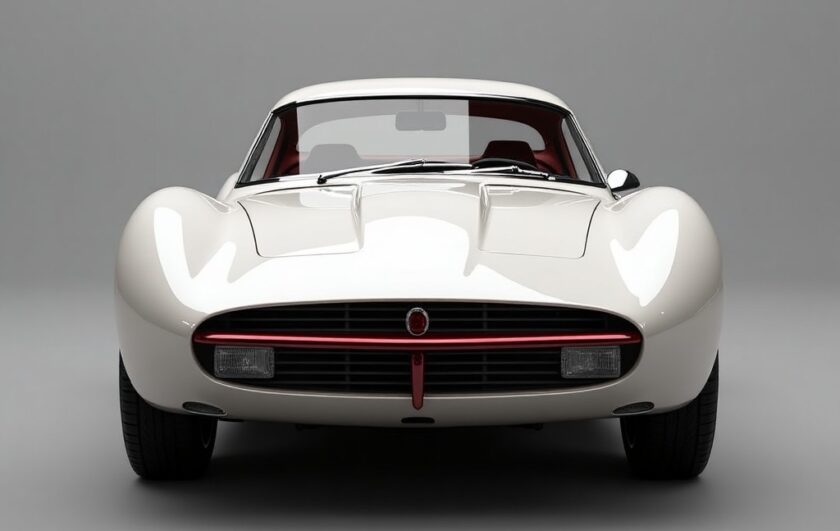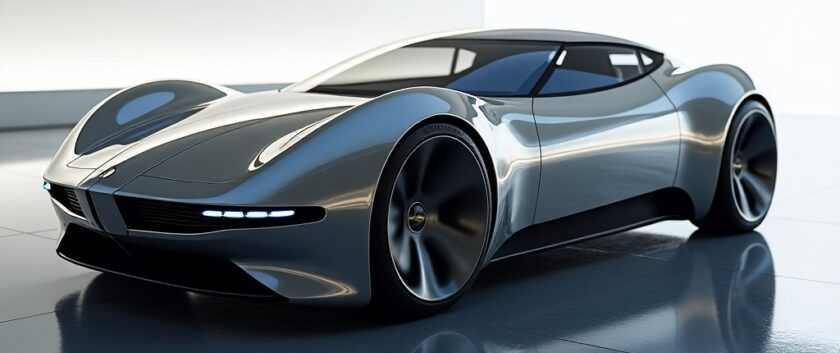
Imagine America in the early ’60s — an age of big dreams, jazz, and the first steps into space… and a company called Studebaker, desperately trying to stay in the game. They didn’t have money for a revolution, but they had guts. And so, he was born — the Avanti.
It all started with an idea: to create “the car of the future.” Not just fast or luxurious — something shocking, alien. Company president Sherwood Egbert decided to go bold: ditch the old methods, gather a tiny design team, and give them… a month. Yes, just 30 days to create something the world had never seen.
Their ace? The legendary Raymond Loewy — a designer who’d done everything from fridges to the Lucky Strike logo. He and his team worked without sleep, sketching between coffee cups and sandwiches. And then — the result. A sculpted body with no front grille, narrow jet-like eyes for headlights, and a silhouette like a rocket. People didn’t know what to think — this wasn’t just a new car. It was a statement.
Avanti debuted in 1962 — like an alien among earth-born machines. It was shown next to NASA prototypes. It impressed so much that even Andy Warhol wanted to put it on canvas.
This wasn’t just a car. It was hope, rebellion, and art on wheels. Studebaker Avanti didn’t quite outrun the future — but it definitely made it look back.

1962 Studebaker Avanti specifications
-
Power: Up to 290 hp (in the supercharged R2 version)
-
Acceleration: 0–60 mph (0–100 km/h) in about 7.5 seconds (R2)
-
Top Speed: Around 200 km/h (124 mph) One of the fastest production American cars of its time
-
Engine: 4.7-liter V8 (289 cu in) Available in R1 (naturally aspirated) and R2 (Paxton supercharged) versions
-
Range: Approximately 400–500 km (based on a 76-liter fuel tank and driving style)
-
Dimensions:
-
Length: 5,115 mm
-
Width: 1,820 mm
-
Height: 1,330 mm
-
Wheelbase: 2,800 mm
-
-
Technology:
-
Fiberglass body (rare for the era)
-
Front ventilated disc brakes (among the first in the U.S.)
-
Aerodynamically shaped, wind tunnel tested body
-
-
Extra Features:
-
Aluminum-trimmed dashboard
-
Stylish bucket seats
-
High-quality interior finish
-
Optional automatic or manual transmission
-

Fun facts about the Studebaker Avanti:
1. Designed in just 40 days (and nights)
Most cars take years to design. The Avanti? Just about 40 days. Designer Raymond Loewy locked his small team in a California house with food, coffee, and sketchpads. No weekends. Barely any sleep. The result? A rolling piece of modern art
2. Fiberglass body — because metal was too slow
Stamping metal panels would take too long and cost too much. So Studebaker went with fiberglass, like the Corvette. Fast to mold, but tricky to assemble — panels often didn’t fit quite right. Assembly workers had to get… creative.
3. No front grille. On purpose.
Avanti was the first American car without a front grille. Why? Raymond Loewy hated them. He wanted the car to look like a jet, not a radiator on wheels. Instead, the smooth nose gave Avanti a futuristic, almost alien appearance.
4. The R2 almost broke records
In 1963, a specially tuned Avanti R3 hit 172.8 mph (276 km/h) at the Bonneville Salt Flats. At the time, it was one of the fastest production sedans in the world. Not bad for a car from a struggling company.
5. The car that outlived its maker
Studebaker shut down U.S. car production in 1963. But Avanti fans weren’t ready to say goodbye. Two passionate dealers bought the rights and kept it alive as the Avanti II, hand-building cars for decades. It became a cult classic.
6. A pop art icon
Avanti didn’t just impress car lovers — it wowed designers and artists too. Its bold shape caught the eye of Andy Warhol’s generation, and some even imagined it on a canvas, right next to soup cans and Marilyn.

But unfortunately, like all good things, this too came to an end.
1963 was a turning point for Studebaker — the company announced the cessation of car production in the U.S. This marked the end of an era for one of the largest automotive brands in the country, with the Avanti being its final brilliant spark. The car, comparable to the Corvette in its innovation and speed, was Studebaker’s last chance to stay afloat in a rapidly changing industry.
Avanti had everything it needed to become an iconic vehicle — stylish design, powerful engines, cutting-edge technology, and even its own fan base. However, despite its innovation and popularity among enthusiasts, it wasn’t enough to alter the company’s fate. Financial crises and plummeting sales forced Studebaker to shut down its U.S. factories, leaving the Avanti without its parent company. But this doesn’t mean the car died along with the brand.

Conclusion:
The Studebaker Avanti, though short-lived as a product of its original company, left an indelible mark on the automotive world. Its blend of innovative design and cutting-edge technology was ahead of its time, showcasing what American car manufacturing could achieve in terms of style and performance. Even though Studebaker couldn’t survive the changing tides of the industry, the Avanti continued to captivate enthusiasts for decades, proving that great ideas never truly fade. It’s a testament to the power of visionary design and how one car, even in the face of corporate failure, can influence generations to come. The Avanti may have been the last great act of Studebaker, but it continues to stand as an automotive icon.


